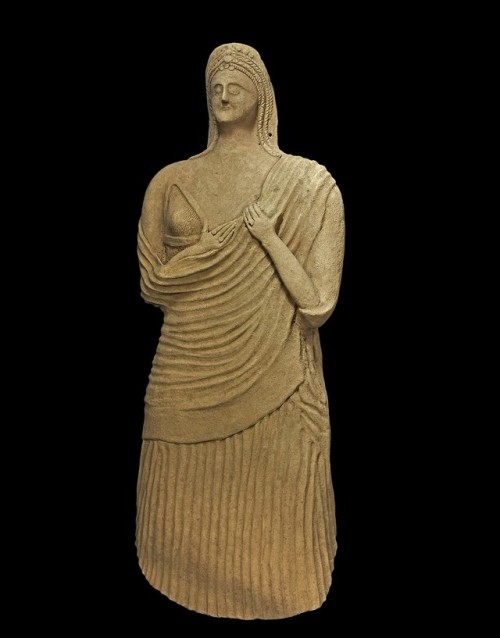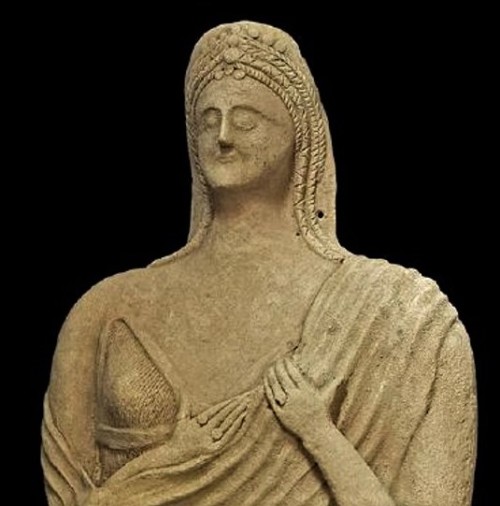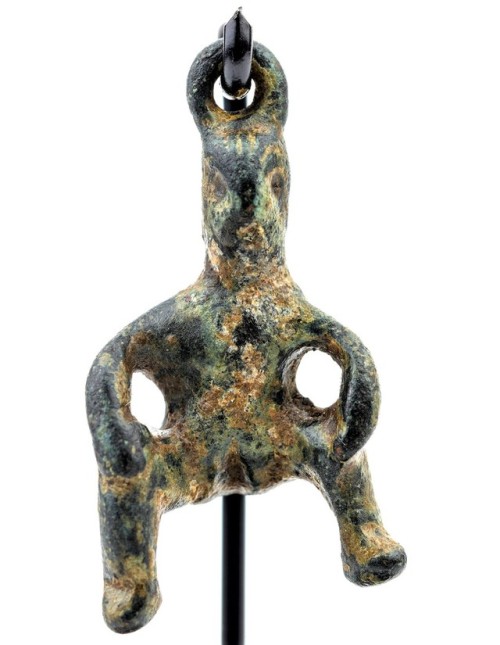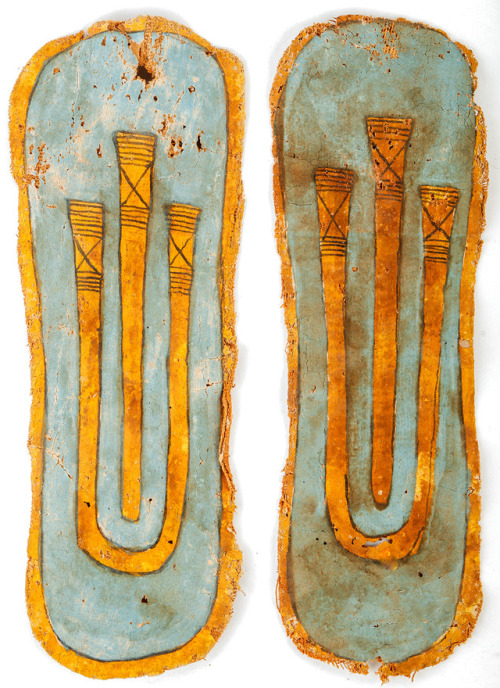#5th century bc
Greek Terracotta Standing Kore, 6th-5th Century BC
A hollow-formed terracotta kore with modeling to the front and sides, wearing a draped robe with pleated lower section and fold across the chest and left shoulder; ribbed and banded undergarment to the chest; elaborate braided hairstyle with pellets, finely modeled face with piercings beside the neck; hands raised to the left breast with three finger rings. 23 kg, 105cm (41 ¼")
The piece displays styles of Eastern Greek workmanship, possibly from one of the Greek islands, Cyprus, or one of the Greek colonies such as Cyrenaica, and is that of a kore (pl. korai), the name given to a type of free-standing ancient Greek sculpture of the Archaic period depicting female figures, always of a young age. They show the restrained “archaic smile”, but, unlike the nude male kouroi, the korai are depicted in thick drapery, ornate, and in painted examples very colorful. They often have elaborate braided hairstyles. There are a number of theories as to whom they represent with the most popular being that of the goddess Persephone as some are shown holding a pomegranate, a fruit associated with the goddess of the Eleusinian Mysteries.
Another theory is that they represent images of wealthy patrons and were set up in temples as offerings to the gods and to be a constant presence before the deity. Korai are found in most of the ancient cities of the Greek world, with the most famous being those from the Acropolis in Athens. Although they show a similarity in form with the arms either by the side or held up and holding a votive offering, the clothes reveal regional styles and the fashions of the elite in archaic Greek society.
Post link
Rare Greek Bronze Amulet of the Goddess Baubo, 5th-3rd Century BC
A suspension hoop is at top of head of the goddess, who is seen nude with her hands on her knees, revealing her over-sized vulva. Baubo was a fun-loving, bawdy, yet wise, goddess who played a crucial role in preserving the fertility of the land in ancient Greece. This piece may have been worn by a person connected with the Eleusinian Mysteries.1.25 inches (3.1cm) high
Post link
Eastern Greek Gold Double Horse Earrings, Caucasian, 5th-4th Century BC
A matched pair of hollow-formed sheet gold earrings, each an addorsed pair of horse-heads with filigree and granule detailing, filigree loop to each mouth, coil to each forehead, six loops to the underside each with a chain and sheet gold date(?) pendant; to each face an inset glass cabochon; twisted wire loop above. 18 grams total, 59-63mm (2 ½")
Post link
Egyptian Cartonnage Sandals, Late Period, C. 664-332 BC
With polychrome painted details, impractical for use in the real world, these were funerary offerings placed with the mummy inside the coffin and to be used by the deceased in the afterlife.
Post link
Extremely Rare Hekte with Helios & Horses, C. 410 BC
An electrum hekte from Kyzikos, Mysia with a naked Helios kneeling while holding two horses by their bridles; a tunny fish, the civic badge of Kyzikos, is below them while the reverse side is a quadripartite incuse square. Extremely fine and extremely rare, almost certainly the finest known.
The engravers of the Kyzicene coinage drew their ideas from numerous sources, both local and foreign. Here, the inter-connected mythological relationships of Helios to Apollo; and Apollo as father to the city-founder Kyzikos point to an indigenous origin. The symmetrically balanced composition of the sun-god Helios flanked by the horses’ foreparts must have been sculptural in inspiration and it has been suggested that since the composition on the obverse is perfectly square that it was copied from a metope of a temple. Although full staters bearing this composition exist in some numbers, the hektes are exceedingly rare.
Post link



~ Gilt silver phiale mesomphalos.
Period: Classical period
Date: late 5th century B.C.
Culture: Greek
Medium: Silver-gilt








